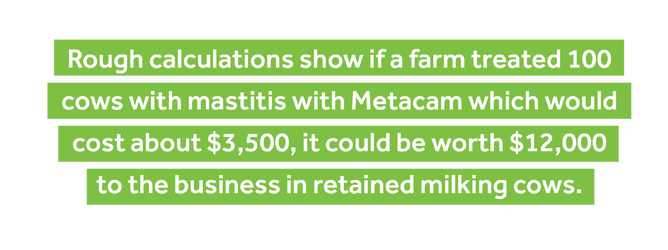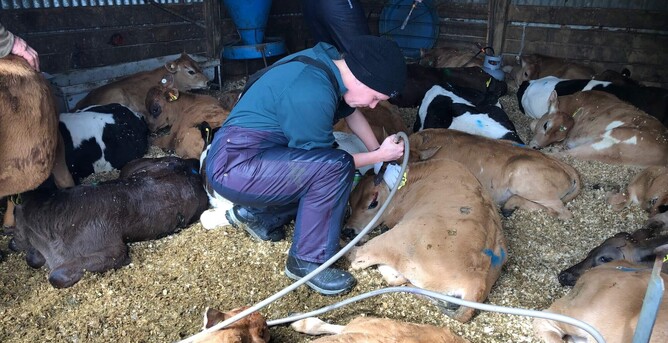There are economical benefits to utilising pain relief during treatment or routine procedures with dairy animals.
Some of the productivity losses caused by animals experiencing pain when they are unwell or receiving routine management procedures can be reduced by using pain relief. It supports their recovery and minimises the impact to the farming business.
Pain in cattle
Pain is one form of ‘animal suffering’, an animal welfare issue, and increasingly a consumer concern affecting the marketability of dairy and red meats. Pain impairs normal productivity functions such as growth and production and when productivity is impaired the farming business suffers.
Pain can be acute and chronic and the ease of relief depends on the intensity and duration. Any inflammatory condition (with a suffix ‘-itis’) is associated with pain. Once pain becomes chronic or pain is associated with a chronic disorder, it is more difficult to control.
It is usually difficult to detect pain in cattle as they are prey animals and have developed a survival strategy that disguises any sign of pain until the cause is severe. This is to divert the attention of predators away from sick or injured animals, which means pain is usually not detected until the cause is relatively advanced.
We perform many husbandry procedures on-farm to reduce aggression, carcass damage and improve identification, handler safety and meat quality. And it is important to determine methods that could be used to mitigate pain during such procedures.
Readily, pain relief is perceived as a cost, although the cost of the pain relief products is often off-set, sometimes multiple times, by better productivity and an improved image of the sector. Let’s look at a couple of examples.
Mastitis and pain relief
Work exploring clinical mastitis treatments using a combination of pain relief and antibiotics shows somatic cell counts can be lower, as well as having a reduced risk of removal from the herd when compared with treating with antibiotics alone.
For example,- It costs approximately $35 per dose of the pain relief drug Metacam to treat a 500 kilogram cow.
- If a farm treated 100 cows with mastitis the cost of treatment with Metacam would be $3500 (excluding the value of the milk withholding since they will be treated with antibiotics anyway).
- They would potentially end up culling 12 fewer cattle at the end of the season and the difference between the value of milking cows and cull cows could be worth $12,000.
Subtracting the cost of the pain relief, the farm is $8,500 better off, as well as having the ability to select other cows to cull and lift the value and productivity of the herd in general.
Disbudding calves with pain relief
The evidence is building to support using pain relief during disbudding and its benefits for calf productivity as well as calf welfare, helping calves recover faster and reach weaning weight sooner.
Studies show that disbudding without pain relief reduces subsequent milk intake and by day 15 after the procedure calves are still growing slower than the calves who do receive pain relief.
Other considerations
There are times when pain relief is not suitable, for example, a bad fracture, no products accessible, or a grave prognosis but animal suffering should be avoided and euthanasia must be considered in those situations. Always talk through your options with your veterinarian and have standard operating procedures in place to help the farm team determine the best course of action.
Ultimately, when planning animal health this spring and throughout the season it is worth considering utilising pain relief to treat unwell animals or perform routine procedures.



